The 82nd Airborne Division is a highly respected and elite unit within the United States Army, renowned for its specialized role in parachute assault operations. Despite not being classified as a special operations force, the 82nd Airborne Division has significantly impacted military history. Based at Fort Bragg, North Carolina, the unit is part of the XVIII Airborne Corps.
Introduction
The Division comprises three brigade combat teams, an aviation brigade, divisional artillery, and various support units, with an authorized strength of approximately 10,800 soldiers. The Division is capable of rapid deployment and is often the first to arrive on the battlefield. With its unique capabilities, the 82nd Airborne Division is a key asset in the United States military arsenal.
It is important to note that the 82nd Airborne Division is distinct from other special operations units, such as the Green Berets or U.S. Army Rangers, as it has a different structure and objectives. However, it shares similarities with another airborne unit, the 101st Airborne Division. While both units specialize in parachute operations, they have different focus areas and responsibilities.
History
The 82nd Airborne Division, known initially as the 82nd Division, is a renowned and elite unit of the United States Army that has significantly impacted history. Constituted in 1917, shortly after America’s entry into World War I, the Division was organized at Camp Gordon, Georgia and served with distinction on the Western Front in the war’s final months. War to its initial members being from all 48 states, the Division acquired the nickname “All-American,” which is reflected in its “AA” shoulder patch.
In World War II, the Division was reconstituted as the first airborne Division of the U.S. Army and fought in numerous campaigns, making a significant impact through its “forced entry capability” that allowed America to gain a tactical advantage over the enemy. This led to the Division earning several medals for valor, including five Medal of Honor winners. The Division also earned the nickname “America’s Guard of Honor” from General Patton.
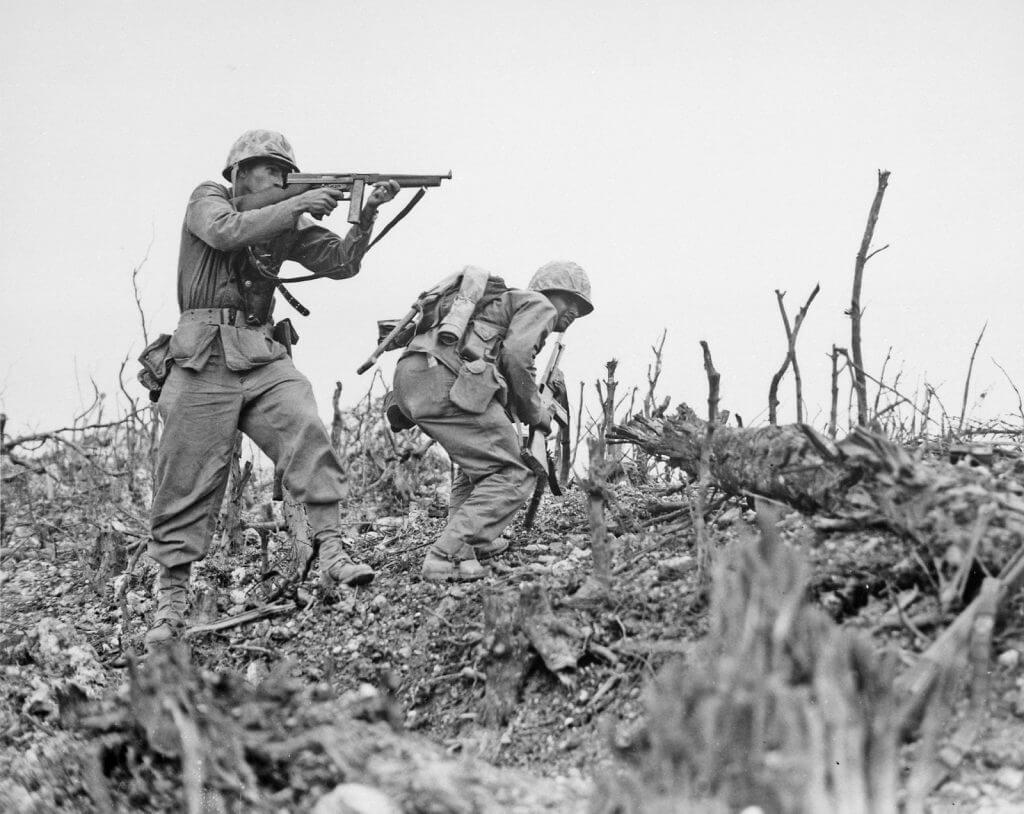
After World War II, the Division continued to develop and perfect its combat methods, training, equipment, and leadership as America’s only airborne Division. The 101st Airborne Division, similar but slightly different, was converted to a training unit in 1953 and did not jump again despite retaining the “Airborne” moniker. Meanwhile, the 82nd Airborne Division continued to evolve and adapt, particularly in the use of helicopters during the Vietnam War, becoming an Air Assault/Air Mobile unit capable of delivering troops quickly around the battlefield through the use of helicopters.
The 82nd Airborne Division commonly referred to as the “All-Americans,” has been the premier rapid deployment force of the United States military since the early 1960s. Possessing the unique capability of forced entry without the need for prepared airfields or landing zones, the Division can deploy a highly trained, expertly led unit of elite shock troops with significant lethality within 18 hours of a decision by the National Command Authority.
This readiness posture has been maintained 24/7/365 for the last 60 years, during which time the 82nd fought in every major and many minor conflicts. From Operation Golden Pheasant in the Dominican Republic in the 1960s to Operation Urgent Fury in Grenada in 1983 and Operation Just Cause in Panama in 1989, the 82nd has proven to be a formidable force on the global stage.

In addition to its combat capabilities, the 82nd has played a key role in humanitarian missions, such as Operation Uphold Democracy in Haiti in 1994. In this mission, the 82nd was deployed secretly to forcibly take over the country and install a democratically elected government. The Division’s presence and the threat of its deployment were instrumental in bringing a peaceful resolution to the crisis.
The 82nd Airborne Division is renowned for its ability to achieve objectives quickly. This was demonstrated in 1994 when General Cedras, who had previously refused to step down, abruptly capitulated after the Division was deployed to Haiti. The mission was ultimately aborted, and the paratroopers returned to Fort Bragg, North Carolina. This event led to the installation of a democratically elected leader, Jean-Bertrand Aristide.
In the following months, elements of the Division, known as Task Force Panther, were deployed to Panama for Operation Safe Haven/Safe Passage to address the unrest in Cuban migrant camps. Since then, the 82nd Airborne has been deployed for numerous tours in the Middle East in support of the Global War on Terrorism.
The Division is always ready to defend America’s interests and is the tip of the spear. The paratroopers and their families make significant sacrifices to be part of this elite unit and are among the most highly trained, well-equipped, and well-led in America’s arsenal. It’s worth noting that while the U.S. Army has several Airborne Brigades, none adhere to the 18-hour no-notice deployment sequence or the 2-hour recall lifestyle. Furthermore, the Division is the first level at which a unit is entirely self-sufficient and can conduct independent operations without external support. This autonomous capability is a unique aspect that sets the 82nd Airborne Division apart within the U.S. military.
Peacekeeping and War on Terror
As one of the world’s most highly trained light infantry divisions, the 82nd Airborne Division has participated in nearly every major combat deployment of the U.S. Army since the Vietnam War. The Division has been deployed in various operations such as Operation Urgent Fury in Grenada in 1983, Operation Golden Pheasant in Honduras in 1988, Operation Just Cause in Panama in 1989, Operation Desert Shield/Desert Storm in Saudi Arabia and Iraq in 1990-91, Operation Joint Endeavor in Bosnia in 1995, Operation Joint Guardian in Kosovo in 1999, Operation Enduring Freedom in Afghanistan in 2002, and Operation Iraqi Freedom in 2003.

As of 2007, elements of the 82nd Airborne Division were deployed to Iraq to support Operation Iraqi Freedom. The soldiers from the 82nd Airborne Division continue to support U.S. operations worldwide, including engagements against Islamic State (ISIS, ISIL) in Iraq, where they were engaged in training and advising Iraqi troops.
Operational structure and organization
In December 2013, the U.S. Army’s 82nd Airborne Division underwent a comprehensive restructuring and reorganization. Despite the numerous changes made, soldiers serving in the Division have reported that little has altered in practice. The 82nd Airborne Division currently comprises three brigade combat teams, an aviation brigade, divisional artillery, and support elements and has an authorized strength of around 10,800 troops.
One sentiment frequently expressed by members of the Division when presented with new weapons and equipment is that they don’t see the need for them. They believe the most powerful weapon is an airborne soldier, who only requires a parachute, boots, an M4 carbine, and a bayonet to complete their mission. This sentiment extends to the reorganization as well.
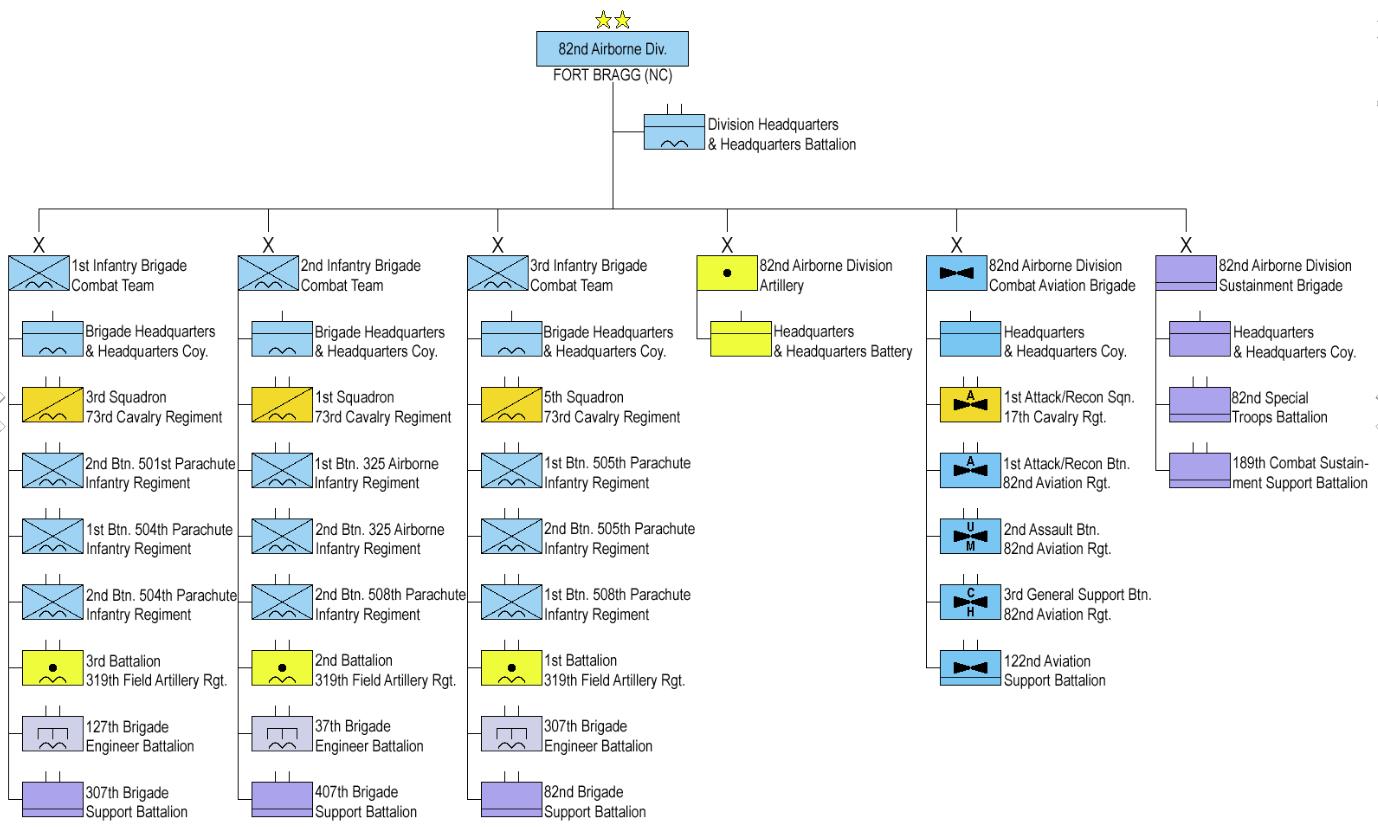
The 82nd Airborne Division is also known as “America’s Guard of Honor” and serves as the nation’s strategic offensive force, always maintaining a high level of readiness. Throughout its history, soldiers of the Division have lived up to its motto of “All the way!” and made significant contributions to the nation’s defense.
Like many units in the military, the 82nd Airborne Division has adopted mottos to represent its identity. These include “All the way!” and “Death from above,” and their march slogan is “The All-American Soldier.”
Traditions
In honor of the 1944 Waal river crossing executed by the 504th Parachute Infantry Regiment and the 307th Engineer Battalion (Airborne) during Operation Market Garden, an annual competition is held on the anniversary of the operation at McKellar’s Lake near Fort Bragg. The competition, known as the Crossing of the Waal, sees participating companies compete for a coveted prize – a paddle. The significance of the paddle lies in the fact that during the original crossing, many paratroopers were forced to row with their weapons as there were not enough paddles for the canvas boats used in operation.
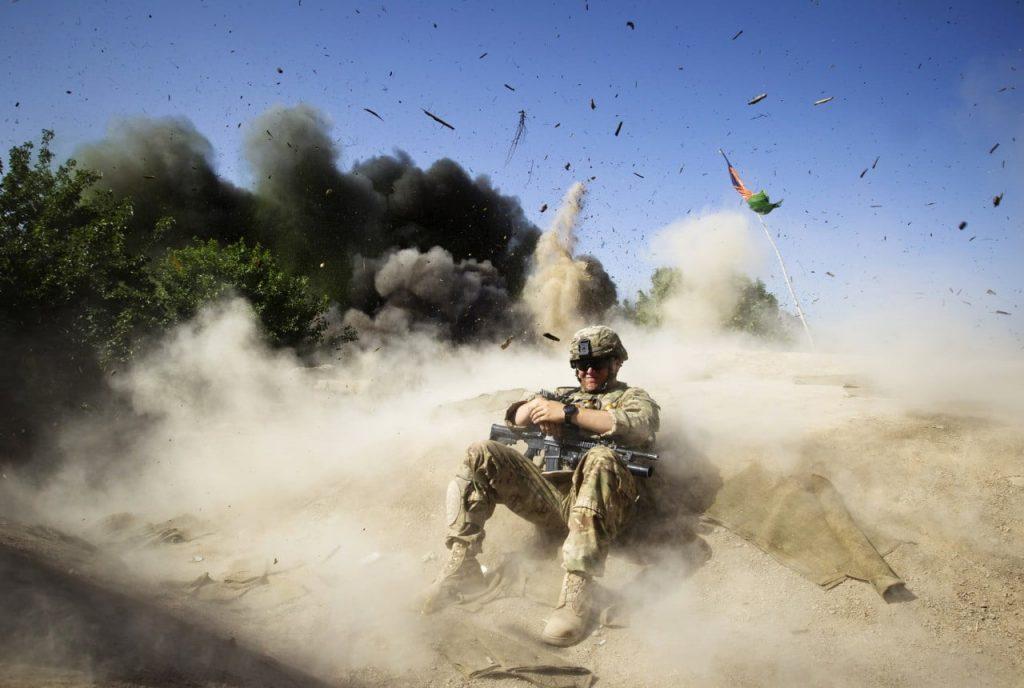
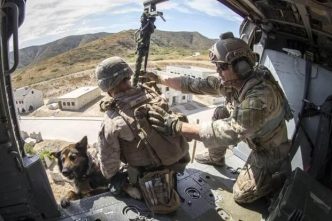
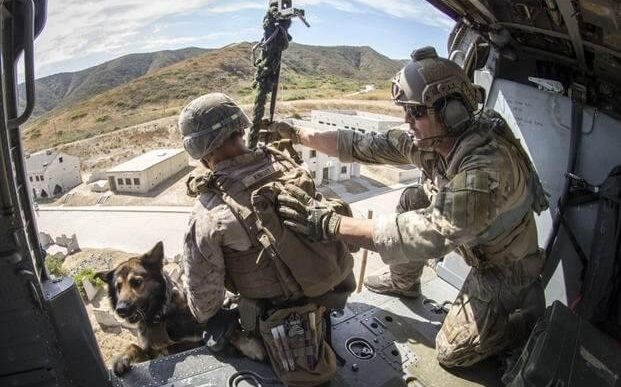
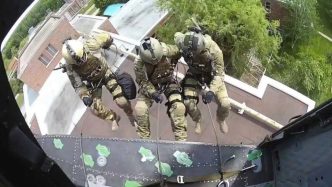
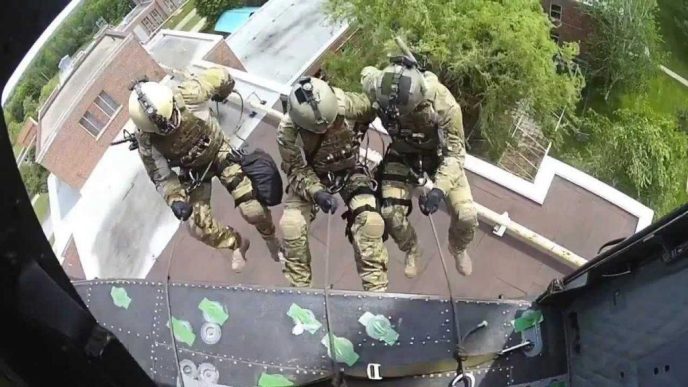


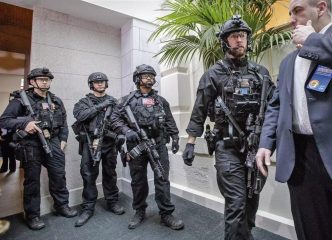
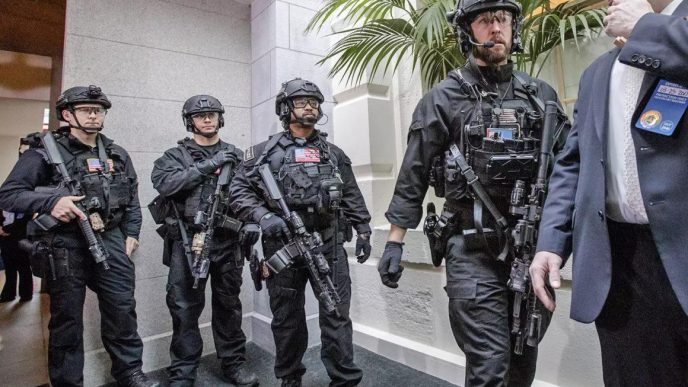
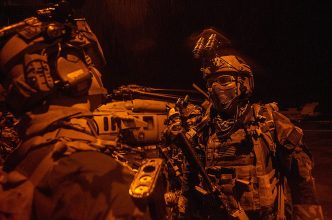
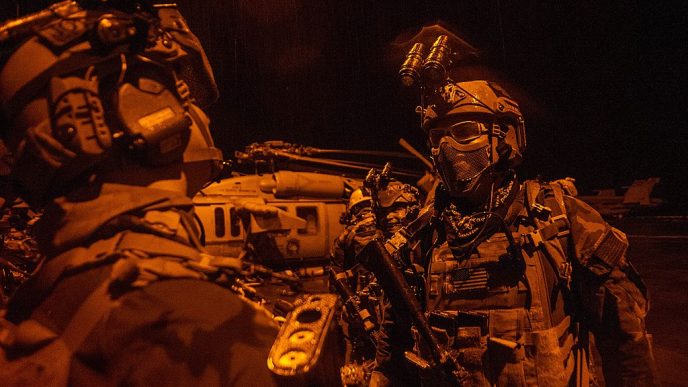
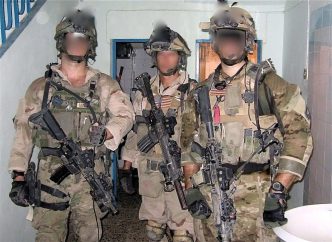
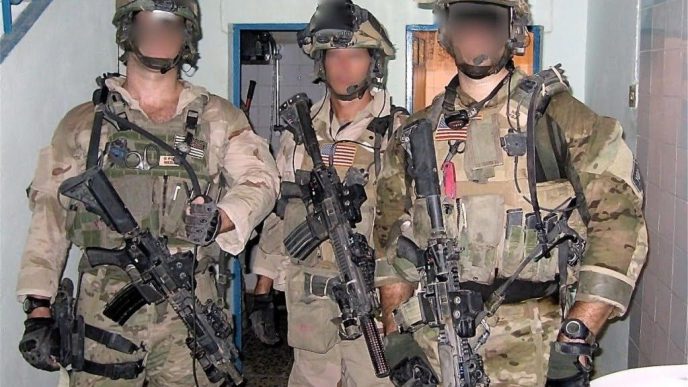
“…it shares similarities with another airborne unit, the 101st Airborne Division. While both units specialize in parachute operations…”
The above is incorrect. The 101st was taken off jump status as a Division in 1974. It is an Air Assault (Helicopter) division, not an Airborne division.
i was with the 508th 82nd and the 101st supplied us with helicopter support. our battalion only had one supply chopper, we humped the jungle in the north i corps.